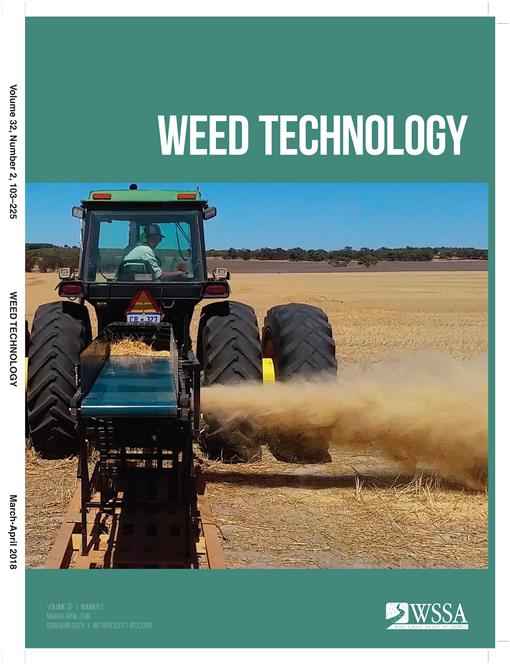The introduction of 2,4-D-resistant soybean will provide an additional POST herbicide site of action for control of herbicide-resistant broadleaf weeds. The introduction of this technology also brings concern of off-site movement of 2,4-D onto susceptible crops such as sensitive soybean and tomato. The 2,4-D formulation approved for use in 2,4-D-resistant soybean restricts application of the herbicide to nozzles that produce very coarse to ultracoarse droplet spectrums. The use of larger droplet spectrums for broadcast applications can reduce herbicide deposition onto target weeds and thus influence herbicide efficacy. Field experiments were conducted to evaluate the influence of nozzle design on herbicide deposition onto target plants and the resulting efficacy of a POST application of 280 g ha-1 glyphosate plus 280 g ha-1 2,4-D. The TTI11004 nozzle produced an ultra-coarse droplet spectrum and reduced coverage and deposition density on spray cards as compared with the XR11004 and TT11004 nozzles that produced medium droplet spectrums. The AIXR11004 nozzle also reduced deposition density on spray cards but did not reduce coverage. Herbicide solution deposition onto glyphosate-resistant Palmer amaranth, tall waterhemp, giant ragweed, and horseweed ranged from 0.28 to 0.72 µl cm-2 and was not influenced by nozzle design. Herbicide efficacy was reduced by the TTI11004 nozzle on Palmer amaranth and horseweed compared with the AIXR11004, TT11004, and XR11004 nozzles when applications were made to either high densities of plants or plants exceeding the labeled height. The use of the AIXR11004 and TTI11004 nozzles that are listed as approved nozzles for glyphosate plus 2,4-D applications on 2,4-D-resistant soybean did not reduce herbicide deposition onto four of the most troublesome broadleaves and did not reduce herbicide efficacy when applied in conjunction with lower weed densities and smaller weeds.
Nomenclature: 2,4-D; glyphosate; giant ragweed; Ambrosia trifida L. AMBTR; horseweed; Conyza canadensis (L.) Cronq. ERICA; Palmer amaranth; Amaranthus palmeri S. Wats. AMAPA; tall waterhemp; Amaranthus tuberculatus (Moq.) Sauer (=A. rudis) AMATU; soybean; Glycine max (L.) Merr.; tomato; Solanum lycopersicum L.





